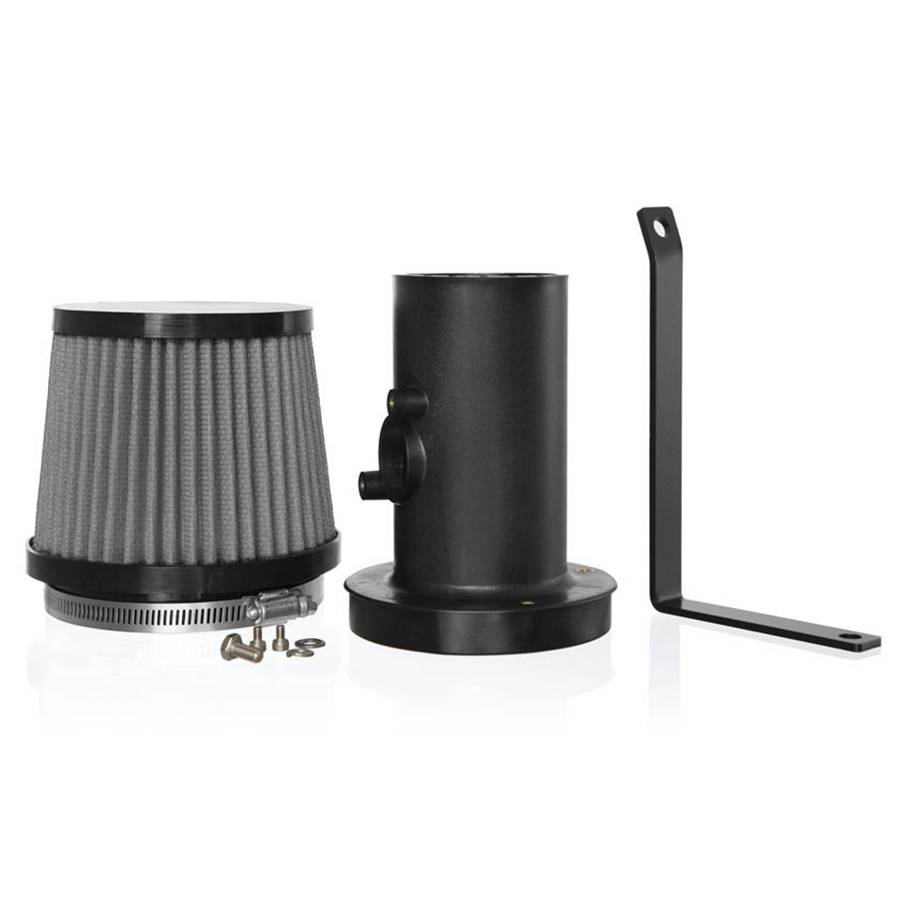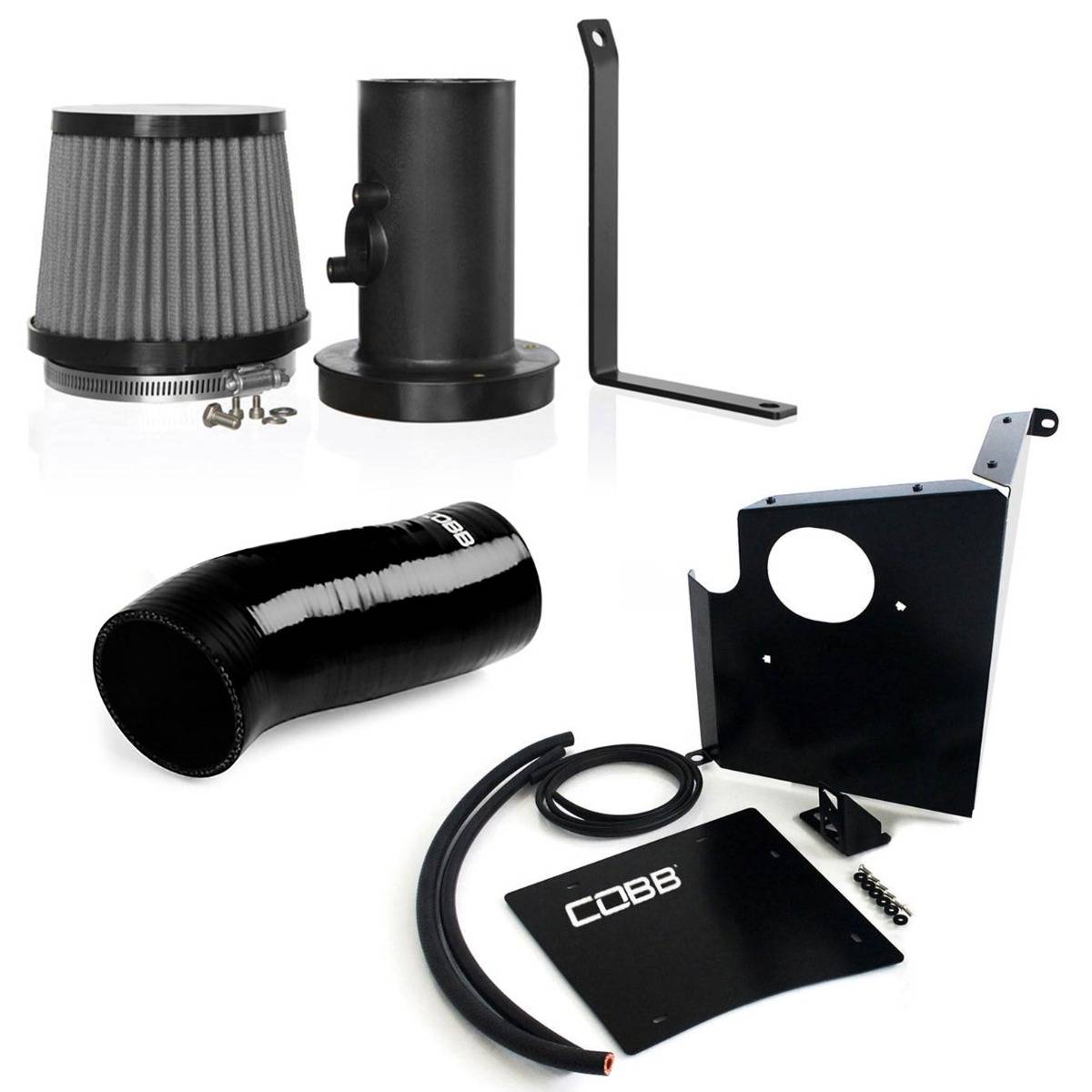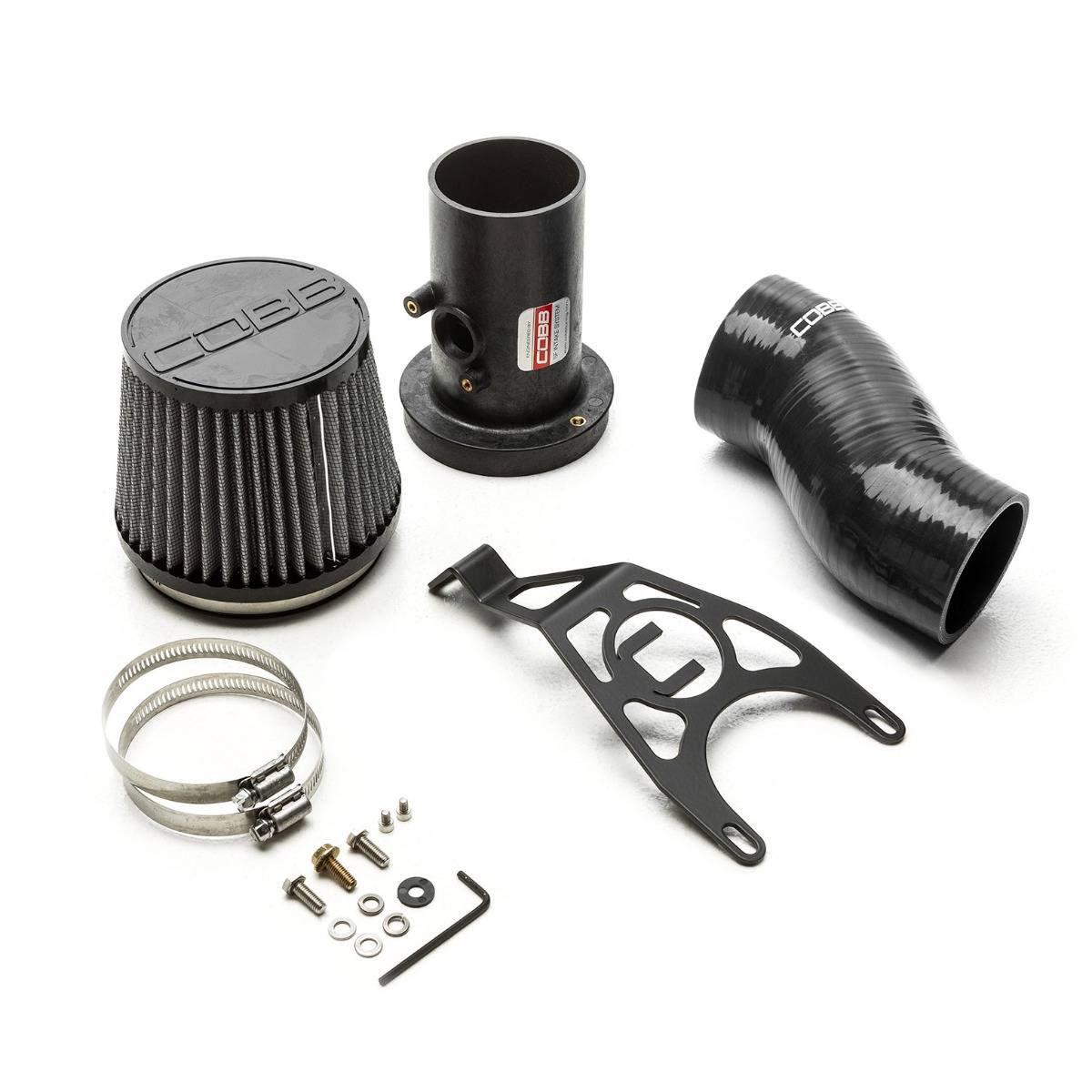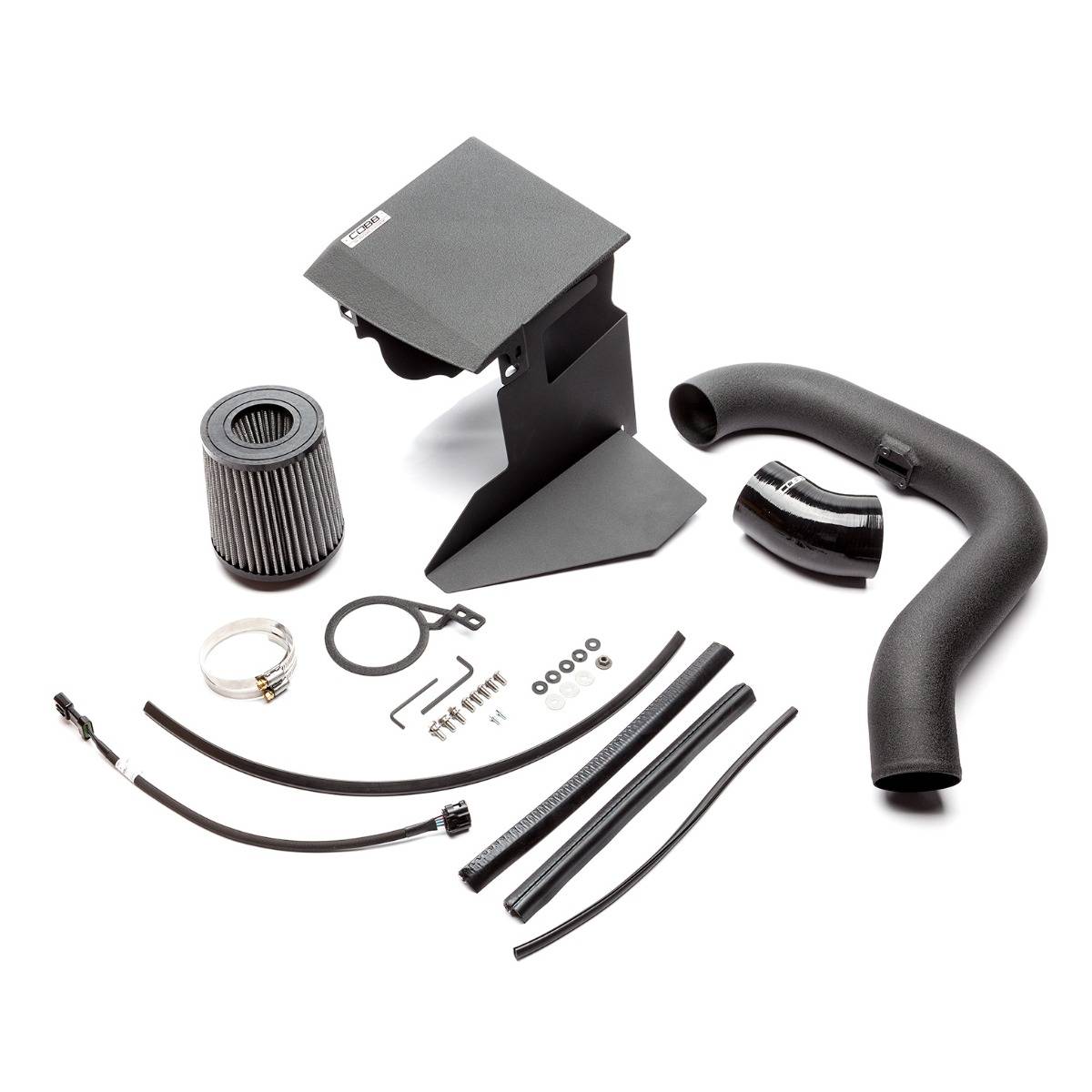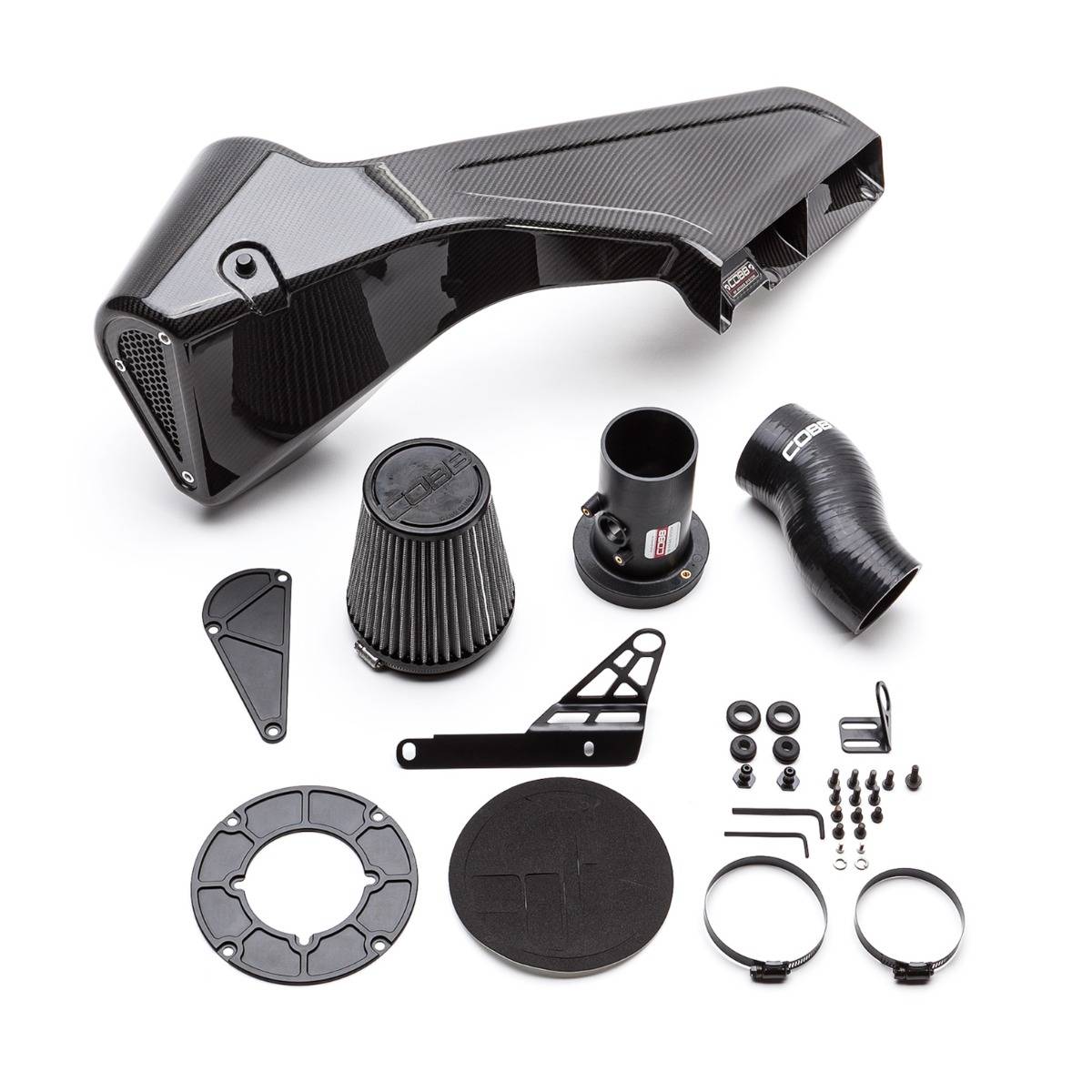We use cookies to make your experience better. To comply with the new e-Privacy directive, we need to ask for your consent to set the cookies. Learn more.
What is the Cobb SF Intake?
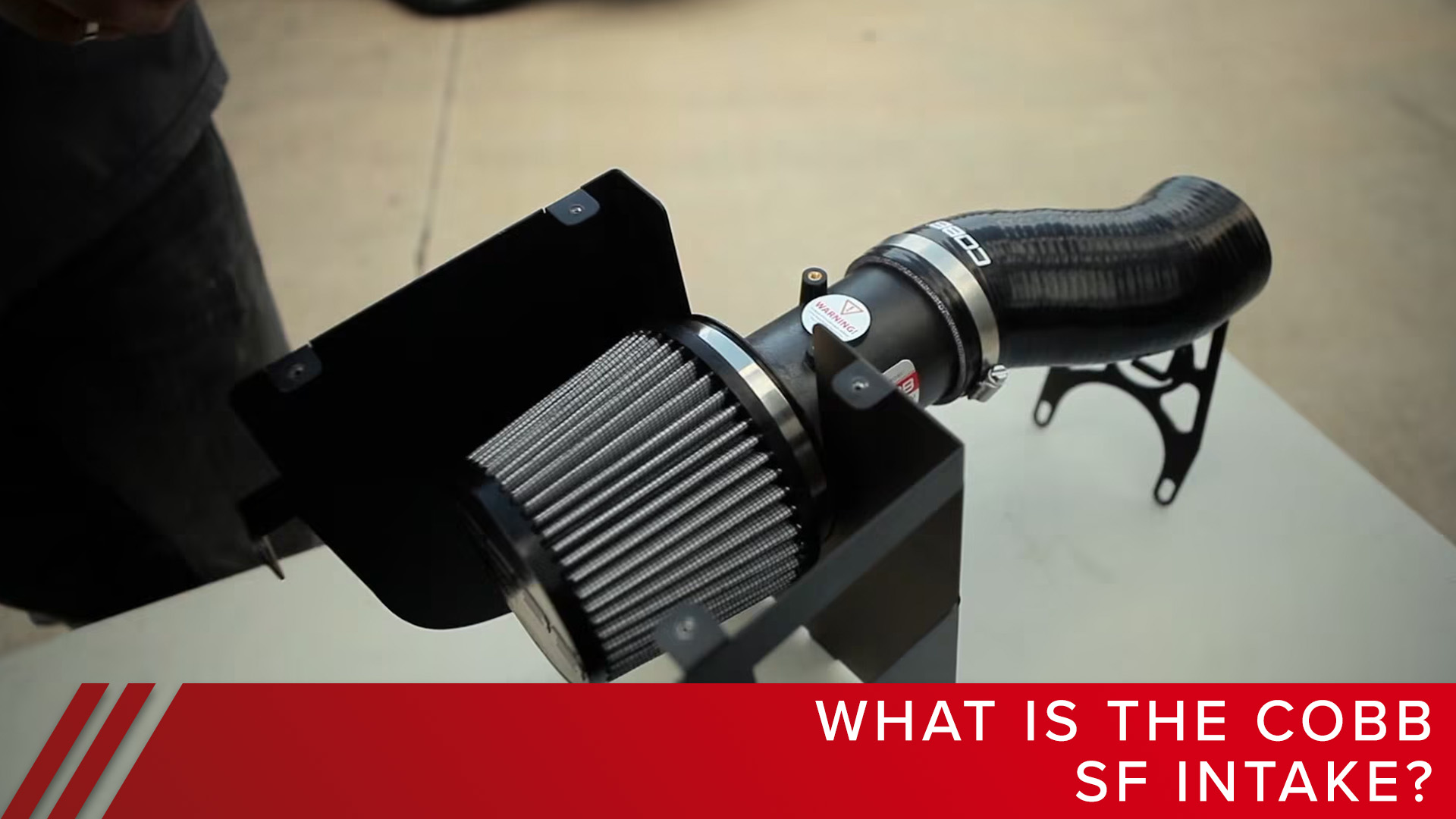
As soon as the Subaru WRX landed in the US in 2002, Cobb Tuning started making parts to improve the cars performance. At the top of that list of parts to develop was a new intake for the car. This is because a turbo has to pull a large amount of air through the air-box, and that demand only increases as you start to make more power. For that reason, there is usually a good deal of power to be gained by designing a more efficient intake on a turbo-charged car.
Subaru uses a Mass Air-Flow (MAF) sensor to measure the air going into the engine to calculate fueling. This sensor sits in the stock air box and is what makes the proper design of an intake on a Subaru more difficult on many other cars. The sensor uses a wire to measure the amount of air going into the engine, and the path of the air over the sensor is critical for its calibration.
If you simply take that MAF sensor and put it into a generic housing or a simple pipe, most of the time that will change the way that the air hits the sensor. This can be because the flow of air over the sensor is more turbulent, the inner diameter of the pipe or housing is different than the stock pipe, or because the placement of the MAF sensor doesn't let it see an accurate representation of the amount of air that is actually going into the engine.
If the design of an intake makes it so that the MAF can't get an accurate reading of the air going into the engine, then this is where you have to take you car to someone that can tune the car, and adjust the calibration of the MAF sensor to make sure that the car is reading the amount of air correctly. Having that correct MAF sensor calibration is critical so that your car will run properly, won't have any drivability issues with the new intake installed, and so you can actually get a benefit for putting this part on your car.
The challenge that Cobb Tuning decided to take on was to design an intake that could maintain the stock MAF sensor calibration to make it safe to install without a custom tune. There were two reasons for this. First, it made it easier to install than most intakes on the market, but it also made the intake more stable and easier to tune for even on high power cars.
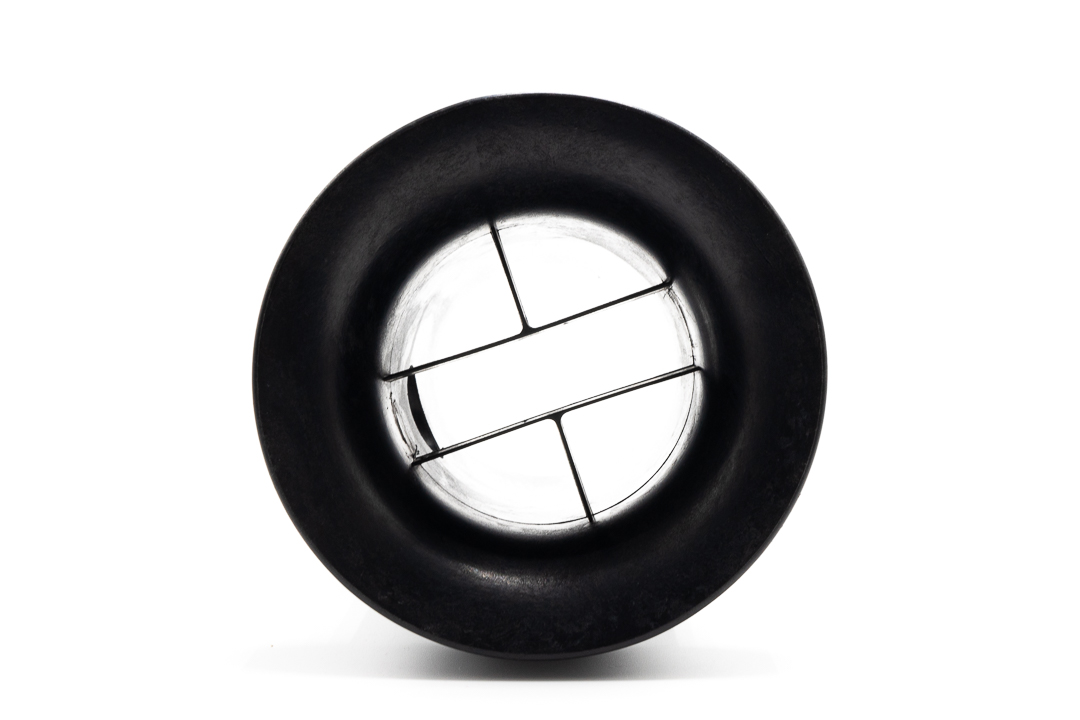
The engineers at Cobb did a lot of testing, and they discovered that by maintaining the same interior diameter of the stock pipe, and by putting some vanes in front of the sensor to smooth out any turbulence in the intake air before it hit the sensor, they were able to achieve that goal, and that is the origin of the Cobb SF Intake.
Click here for the Cobb SF Intake for the 2002 - 2007 WRX and STI
Once Cobb had the intake for the WRX and STI chassis, they also developed the SF intake for the Legacy GT and Outback XT as well.
Click here for the Cobb SF Intake and Air Box kits for all Subaru's
Then starting in 2008, the WRX and STI air box was changed completely, and the process had to start again. In re-designing the air box, Subaru moved the MAF sensor out of the standard tube that it sat in, and they put it in the upper corner of the air box. This created a MAF calibration that proved too difficult to duplicate in a more tubular intake, so for the newer cars, Cobb decided to take a different approach.
For an intake to work well the MAF has to see consistent air-flow, and Cobb had all ready figured that out. But as you get to a point where you are making a good deal more power than stock (say somewhere around 400 wheel hp or more) the inlet diameter of the intake itself can become a restriction.
For the new GV/GR chassis (2008 - 2014) what Cobb decided to do was to increase the performance capability of their intake because they could not find a way to keep from having to re-calibrate the MAF sensor. For this new SF Intake, they gave it a larger internal diameter, and so the ability to ultimately supply more air to the engine, and then they developed mapping for each of these cars that came included in the Cobb Access Port.
Click Here for the Cobb SF Intake for the 08-14 WRX and the 08-20 STI
This is why you cannot install a Cobb SF intake onto a Subaru from 2008 on without mapping for it. But the good news is that when you go with the Cobb SF intake, they have developed mapping to keep you car running properly and get the maximum benefit for putting the intake on your car, and it is included on each and every Cobb Access Port. But beyond that, you also have an intake that has a ton of potential if you decide to really push the limits of your car down the road.
Cobb has continued to use this design philosophy on the 2015+ WRX and STI. Their ability to have not only one of the best designed intakes on the market, but to also be able to develop mapping for that intake to ensure that you get the maximum performance and maximum reliability from their intake is what makes it our preferred intake for most any Subaru.
Click here for the 2015+ WRX Big MAF Cobb SF Intake
To take that design and attention to detail one step further, Cobb has just recently started to develop their series of Cobb Redline Intakes that are designed using nearly all carbon fiber parts. These Redline intakes offer as much performance as the previous SF intakes, but they also give you the look and function of real carbon fiber.
Click Here for the Cobb Redline Carbon Fiber Intake for the 2015+ STI
In short, if you need an intake for your Subaru, the Cobb SF intake is the one that we recommend the most.
Thanks for reading, and Stay Tuned!
-Jon Cooley

